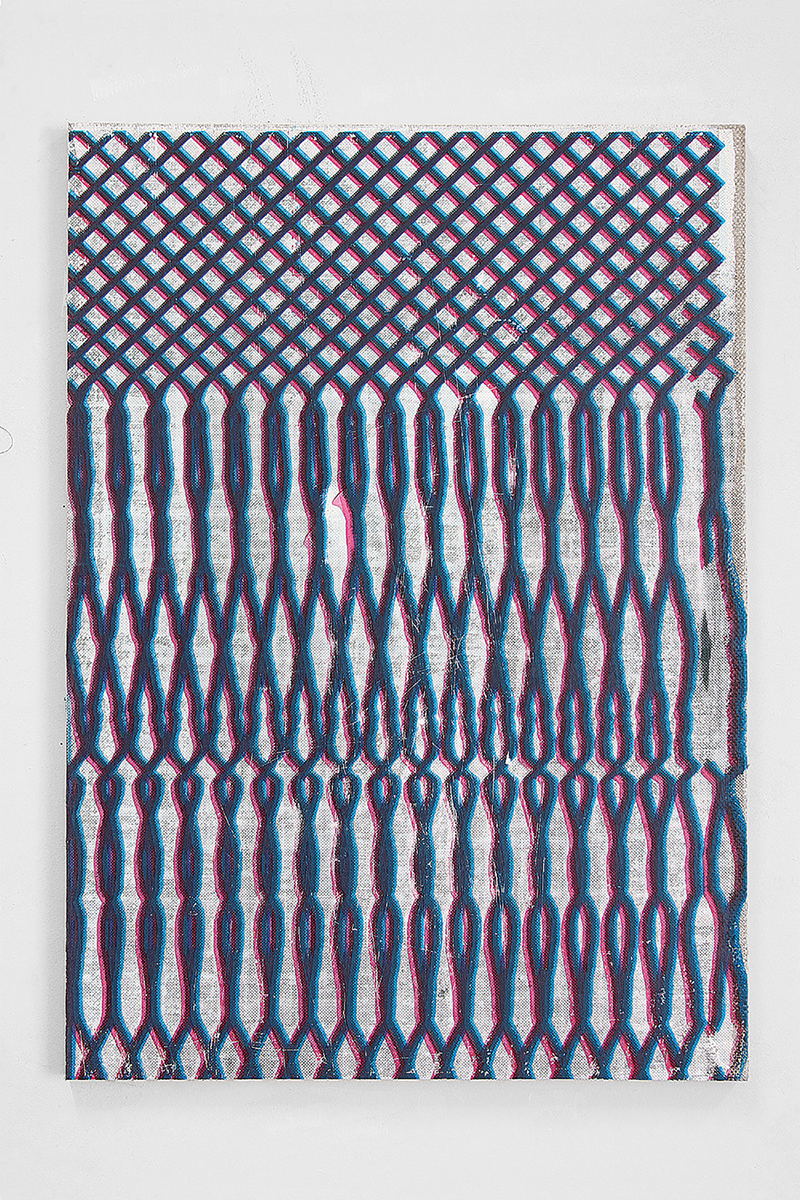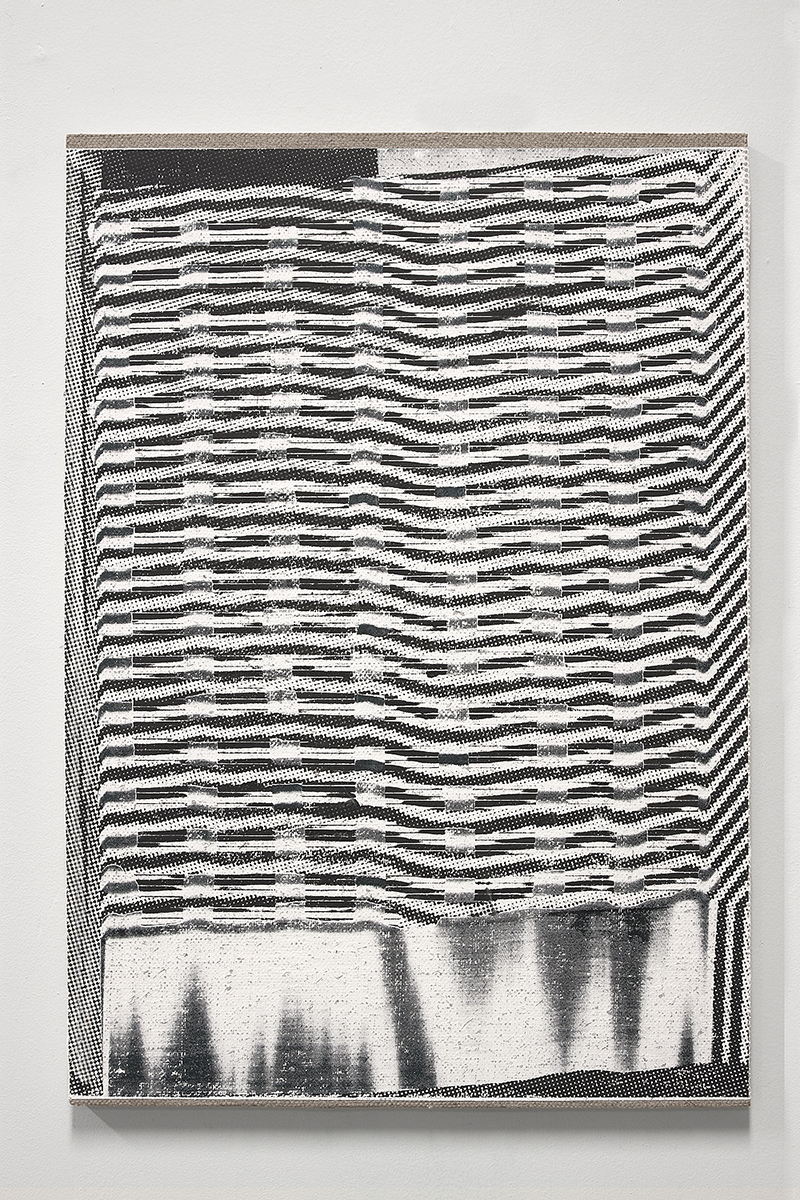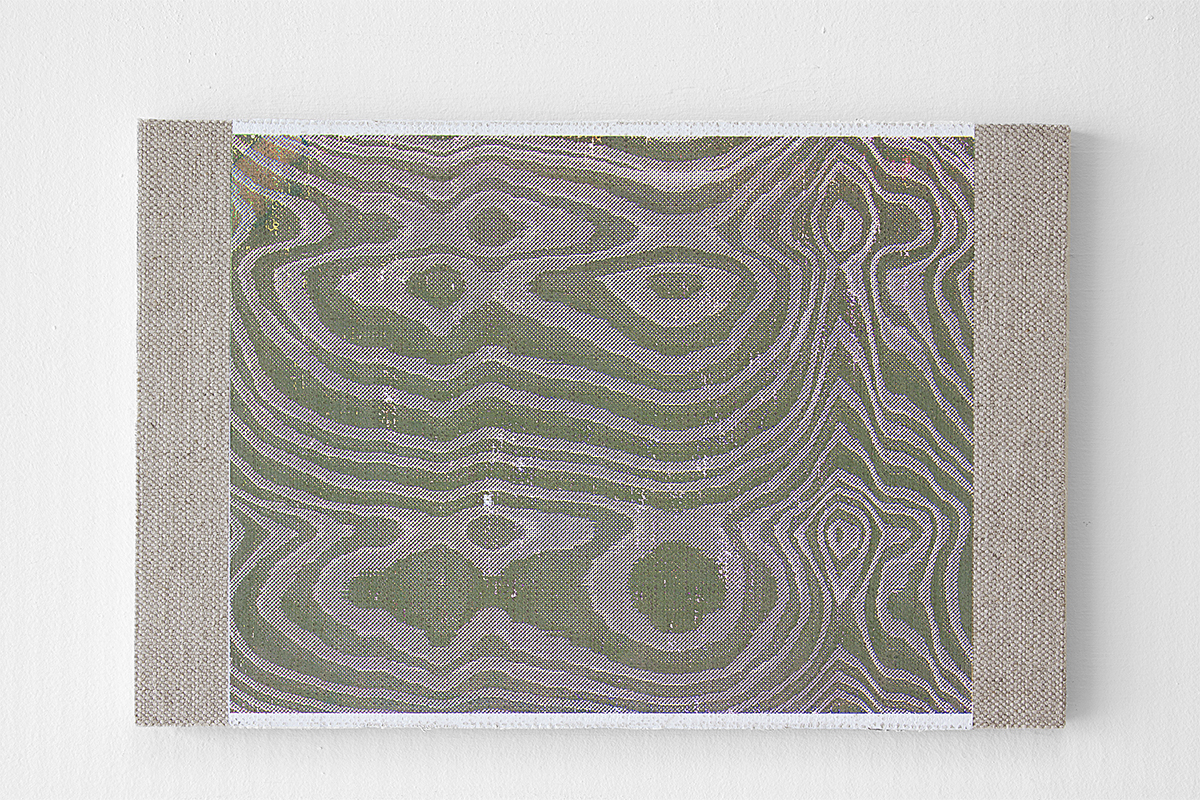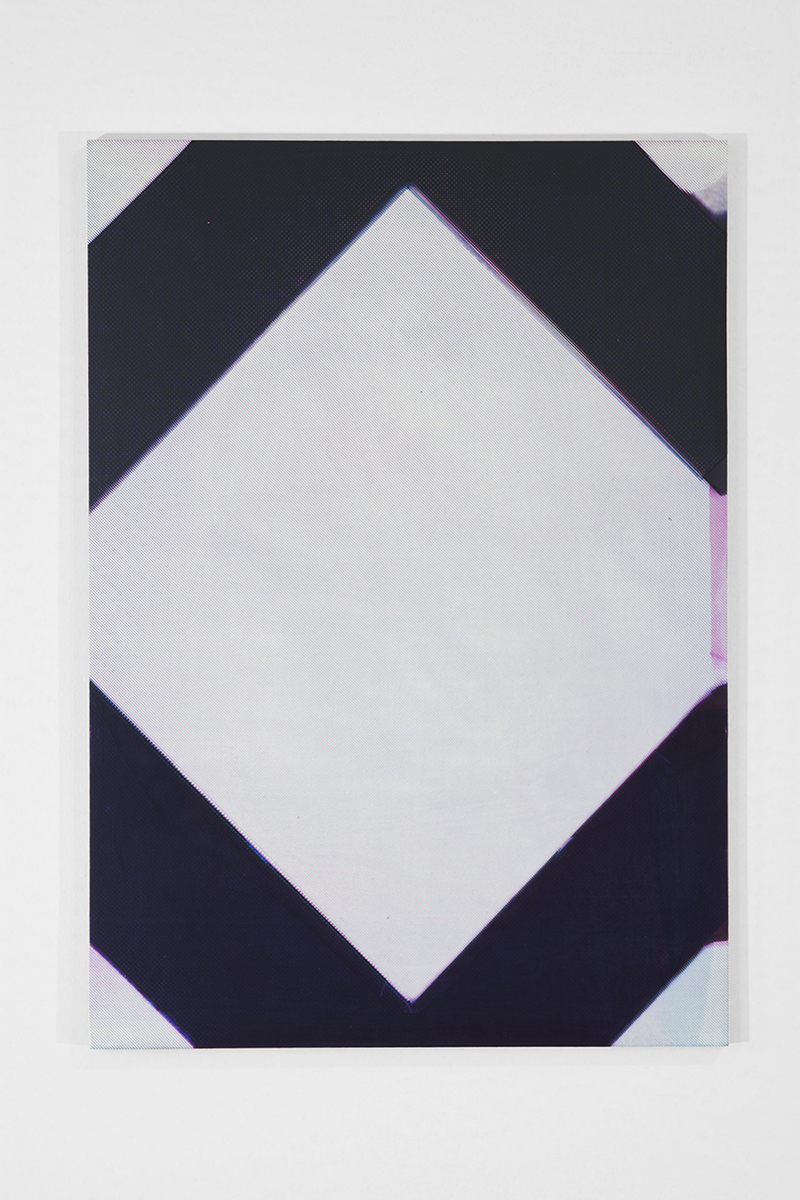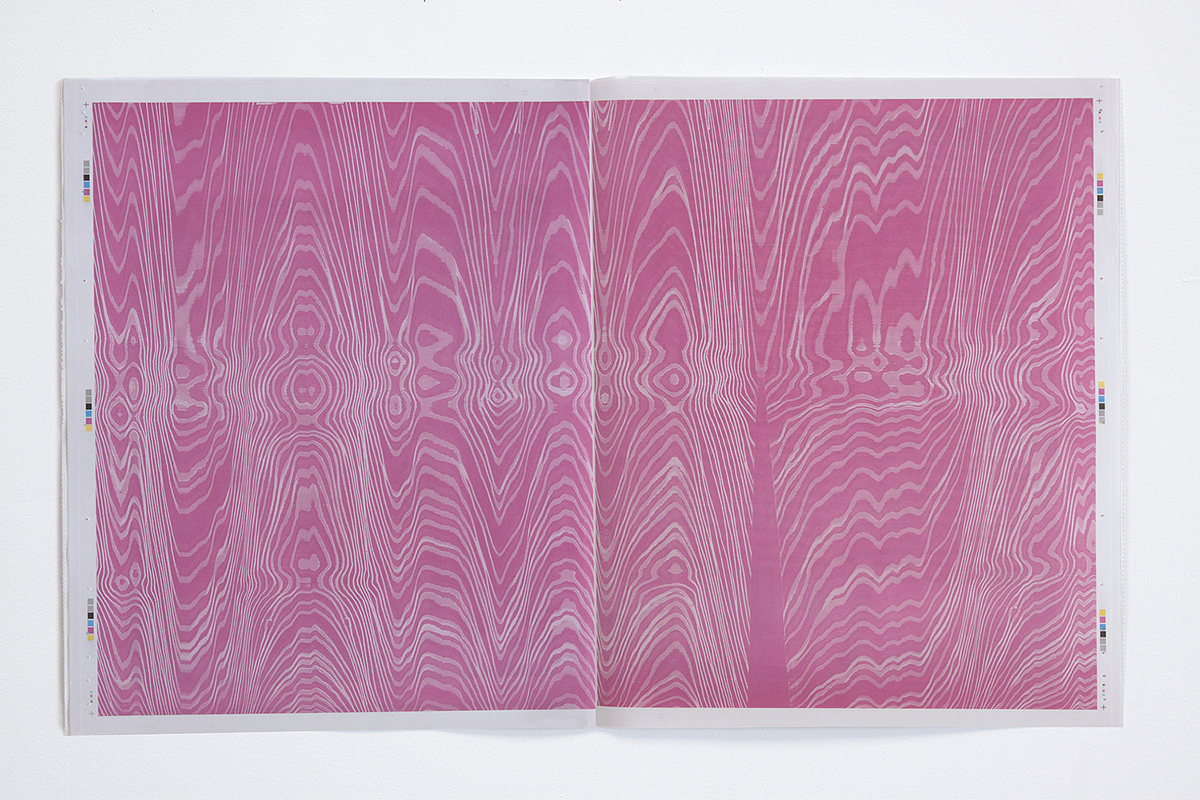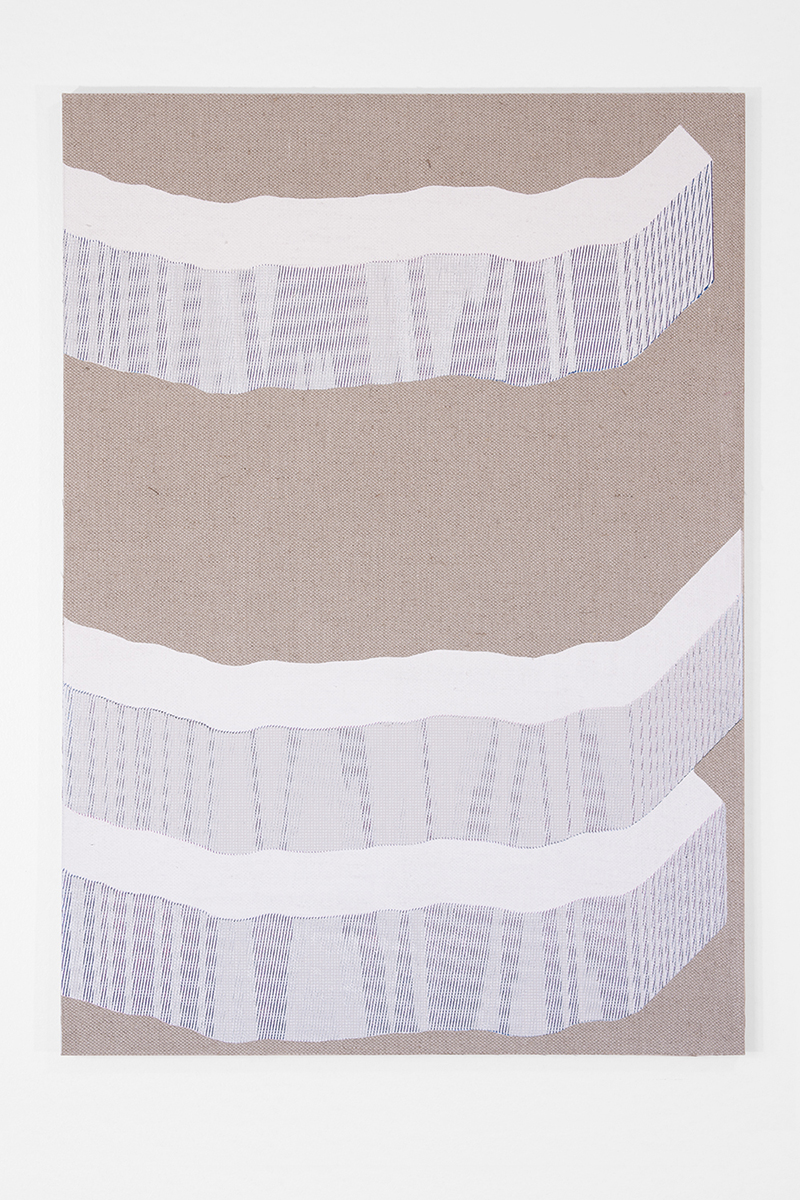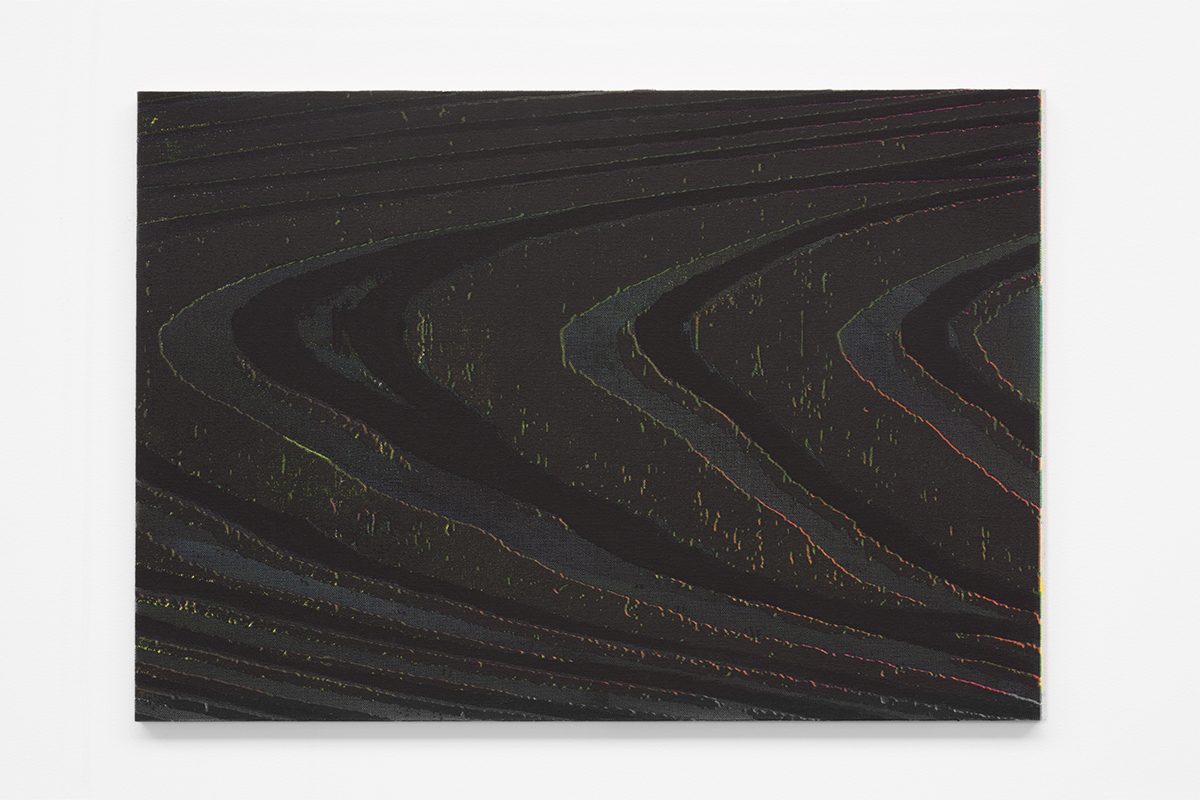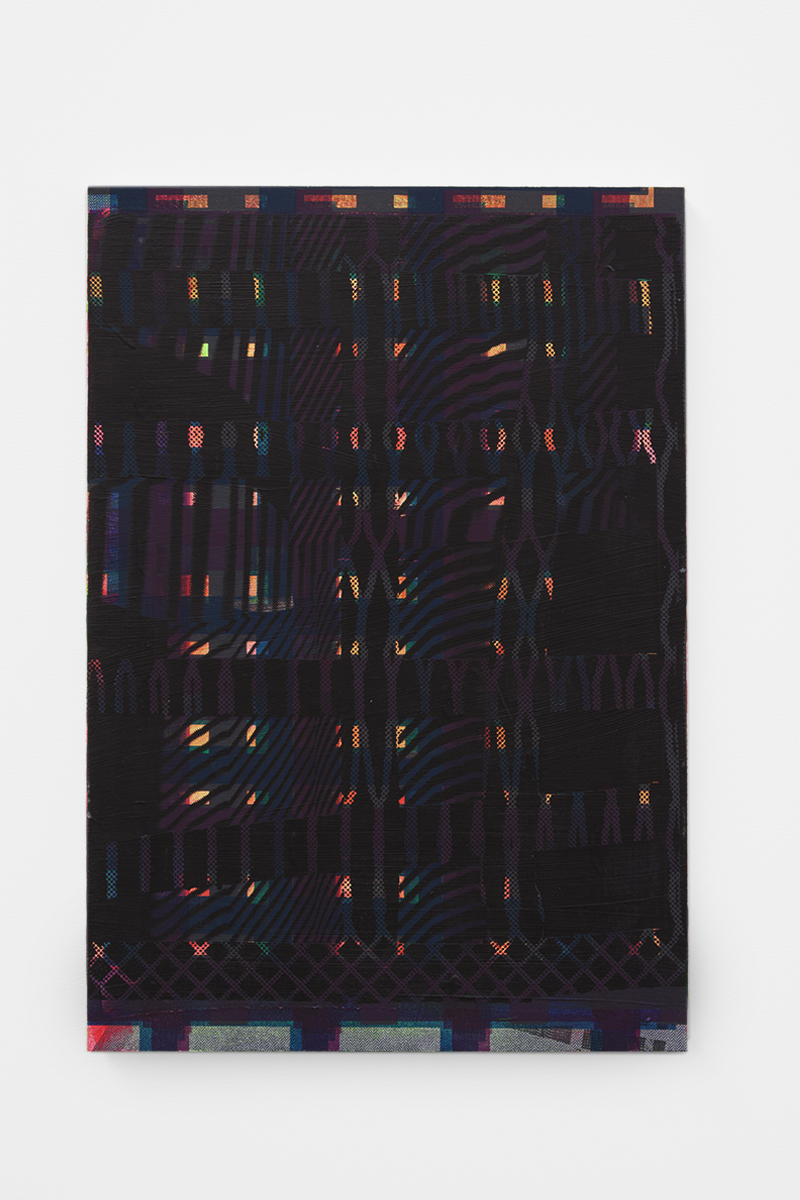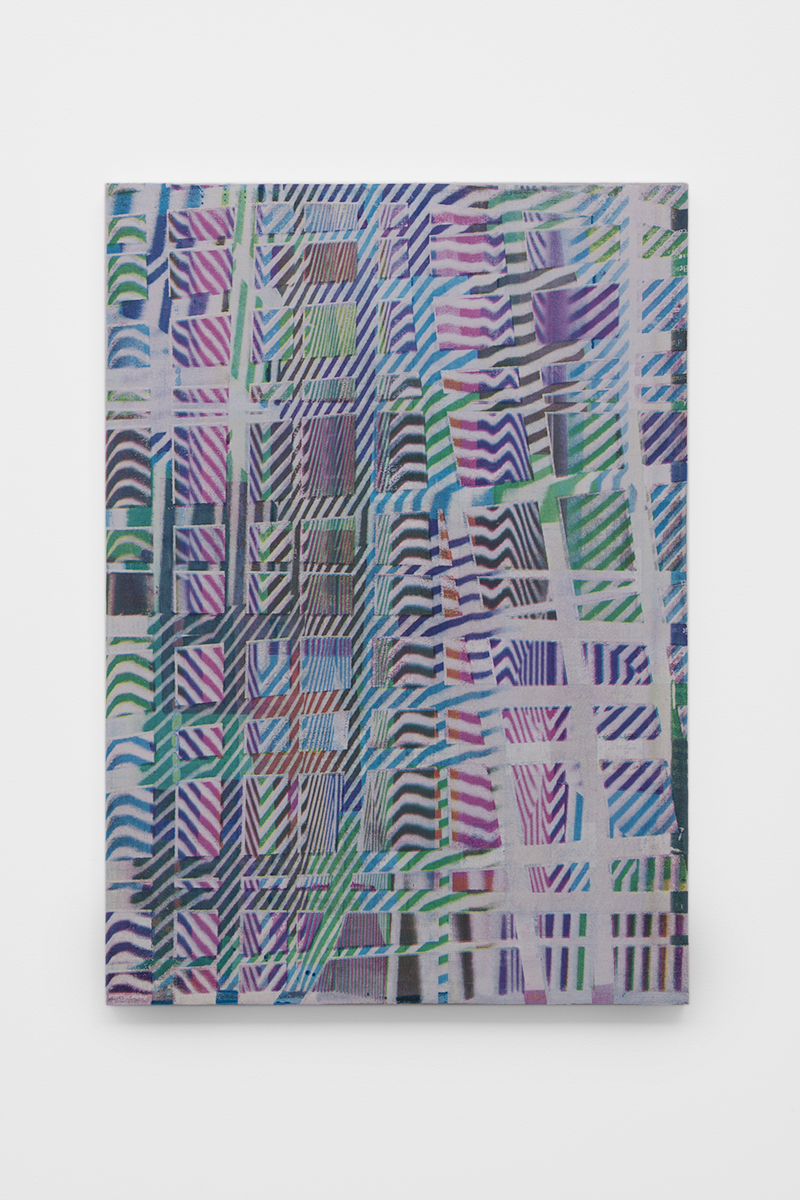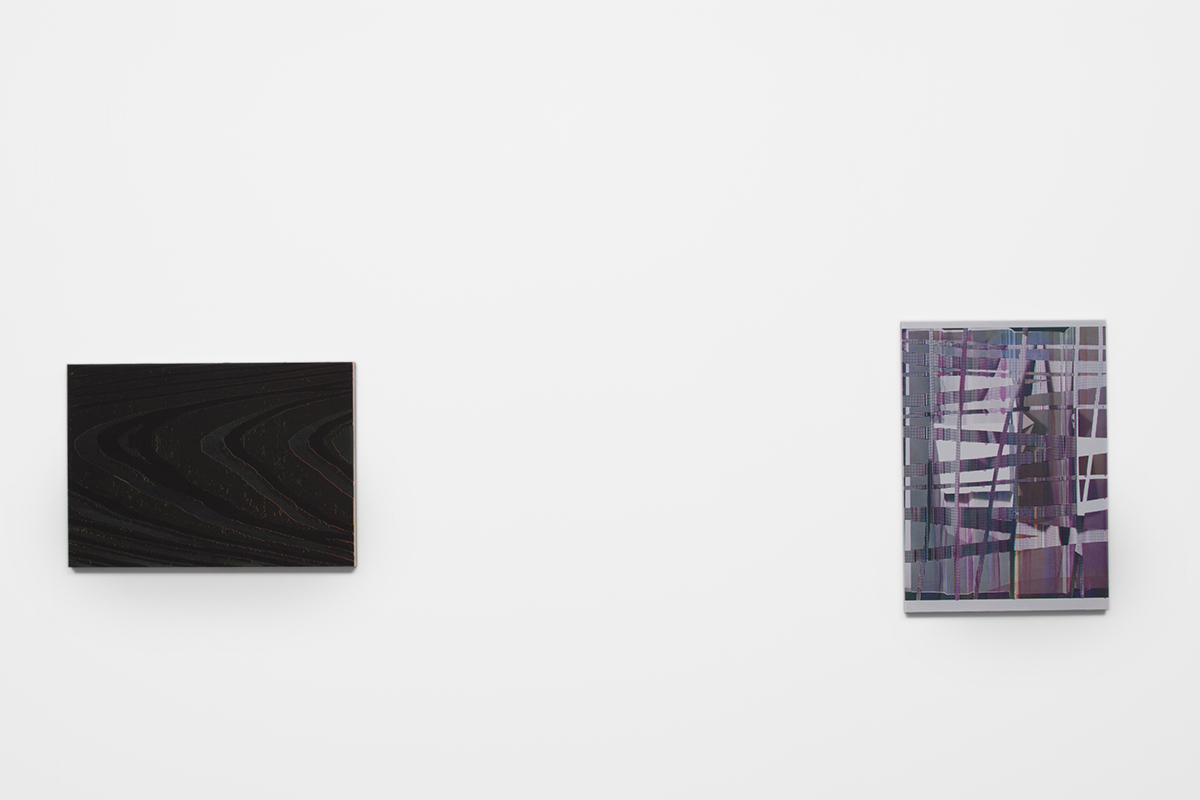Hotzestrasse 23
This group of paintings takes its collective title from the street address of a Swiss company that specialized in producing stereotypes or clichés for the commercial printing industry. The advertisements for this service were regularly placed within Graphis Magazine from the 1940’s- 1980’s, an era predating the eventual dominance of photo lithography, desktop publishing and digital printing.
The paintings from this series are based on a group of scanner drags captured from the printed stereotype advertisements. A scanner drag is the intentional movement of source material, moved at varying speeds through the scanner, causing a unique, distorted capture of the original image. The graphics within the advertisements are distorted by this process and are abstracted, edited, cropped and inverted within Photoshop before being output to silkscreens. Each painting is unique although some are produced in variation. Embedded within this mode of screenprinted image production is a potential for the imagery to exist in multiple or double like a magazine spread. The compositions are produced on panel, often on canvas or linen surfaces using proportions based on European A3 and A2 paper sizes.
This group of paintings takes its collective title from the street address of a Swiss company that specialized in producing stereotypes or clichés for the commercial printing industry. The advertisements for this service were regularly placed within Graphis Magazine from the 1940’s- 1980’s, an era predating the eventual dominance of photo lithography, desktop publishing and digital printing.
The paintings from this series are based on a group of scanner drags captured from the printed stereotype advertisements. A scanner drag is the intentional movement of source material, moved at varying speeds through the scanner, causing a unique, distorted capture of the original image. The graphics within the advertisements are distorted by this process and are abstracted, edited, cropped and inverted within Photoshop before being output to silkscreens. Each painting is unique although some are produced in variation. Embedded within this mode of screenprinted image production is a potential for the imagery to exist in multiple or double like a magazine spread. The compositions are produced on panel, often on canvas or linen surfaces using proportions based on European A3 and A2 paper sizes.

